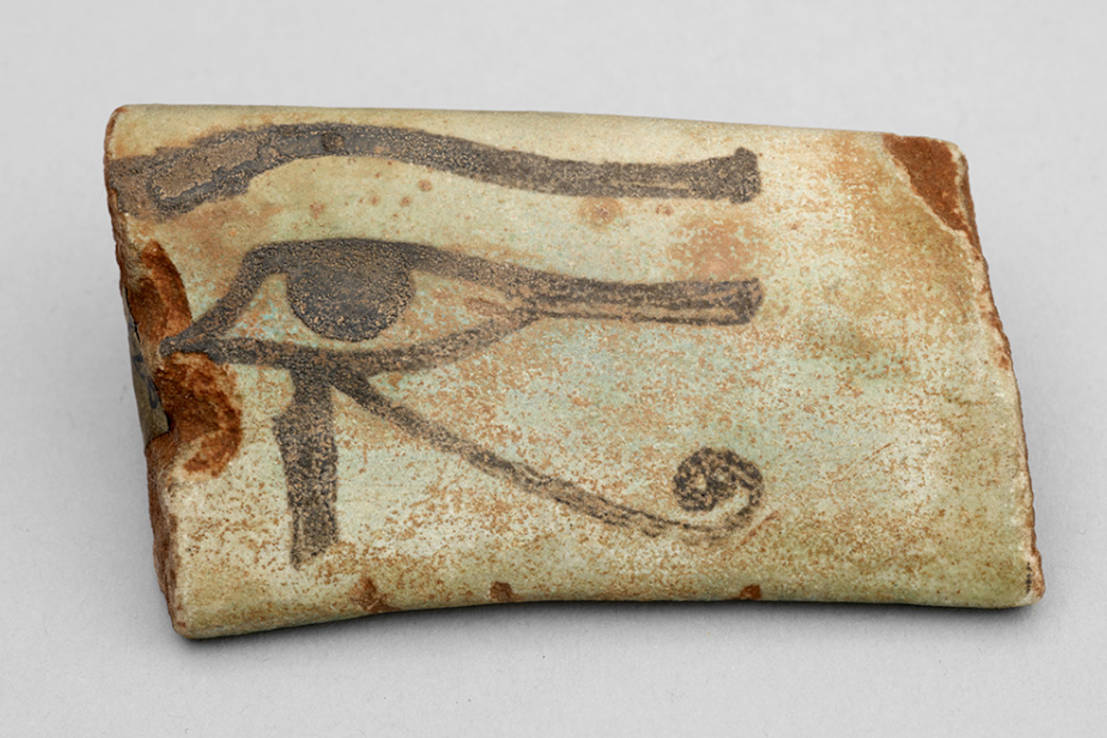
in العربية / Arabic translated by Samantha Newbound
This object has been translated into 12 different languages by 15 different users
هذه هي عين حورس، التي تُعرف أحيانًا باسم عين القمر أو عين رع، وتستخدم كرمز شعبي للحماية في مصر القديمة. يتم تمثيل الإله حورس على هيئة صقر. في الأساطير المصرية القديمة، أُخذت عين حورس في معركة مع منافسه سيث، الذي قتل والد حورس واسمه أوزوريس. أعاد الإله تحوت العين فيما بعد وأصبحت سليمة، وأحياناً يمكن أن يمثله القمر الذي تم تشبيه تشمعه وتضاءله بإصابة العين واستعادتها. أصبح رمزًا شائعًا وقائيًا، خاصة للموتى، وكان مستخدمًا شائعًا لنحو 3000 عام من المملكة القديمة حتى العصر الروماني. كما تم استخدامه في الثقافات المجاورة، مثل الثقافات الكنعانية والسورية والنوبة.
هل هناك أي شيء تحتفظ به كتميمة حظ سعيد أو للحماية؟
Do you have something you’d like to say, in your own language or English, about the object or translation? We’d like to hear what you think.
Translations are community-sourced and for anyone to participate in, however you use your language. For more information, see Community Guidelines.
23 Sep, 2023
Italians, especially in southern Italy, are well known for their attachment to superstition. Therefore, it is not surprising that good-luck charms are particularly popular. Arguably, the most popular amulet is the “cornicello” or “cornetto” (meaning “little horn”). The amulet is believed to protect against “malocchio” (“evil eye”), and it is commonly found in the Italian regions of Campania, Lazio, Puglia, and Basilicata.
The cornetto is in the shape of a horn, and it can be made from metal, but it is most commonly red in colour. This makes them look very similar to chilli pepper, but it is meant to represent an eland horn. The cornetto finds its origin in Greek and Roman mythology as it is linked to another common symbol: the cornucopia. The cornucopia, also known as the “horn of plenty” is a symbol of abundance and it is commonly illustrated as a large horn-shaped container overflowing with fruits and flowers. Similarly, the cornetto is also associated with abundance and fertility and remains one of the most common Italian symbols of protection. If you ever go to Naples, you can be certain to see at least one cornetto be worn as jewellery, hung from the rearview mirrors of a car, or kept in a house for decor and good luck.